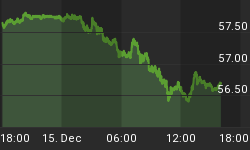The right combination of fundamental and technical factors helped the U.S. Dollar surge to one-week highs against most major currencies last week. The strong close in the Dollar may lead to follow-through buying this week while putting pressure on the major currency futures.
Fundamentally, the late in the week rally by the Dollar was primarily triggered by the better than expected U.S. jobs report. The U.S. Non-Farm Payroll Report showed a loss of fewer jobs than forecast which brought confidence to traders that the U.S. was leading the world out of the recession.
This reaction was different than previous reactions where the Dollar broke on good news. This may be an indication that global traders feel the U.S. financial administrators finally got it right and have put the U.S. economy in strong position to recover well before the rest of the world.
Investors expressed confidence in the change in sentiment toward the Dollar by turning gains from earlier in the week into a cluster of weekly closing price reversal tops All these markets have to do is follow-through to the downside this week in the direction of the reversal to ignite more selling pressure.
Based on the strength of the reversals, it looks as if the Dollar is poised to start a minimum 50% correction of its last break down.
The selling pressure in the June Euro did serious damage to the chart and helped this contract post a weekly reversal down.
Friday's trading action took out a major 50% retracement price as well as four up trending Gann Angles, but the worst of the damage is yet to come as this pair is set to decline following the weekly closing price reversal down.
Based on this developing chart pattern, this market has a chance to break to at least 1.3397 by June 11 - 12.
The combination of a break below a major 50% price at 1.6085 and a weekly closing price reversal should put downside pressure on the June British Pound this week. Political uncertainty in the U.K. is also a contributing factor to the break in the Pound. The minimum downside target of this developing break in the British Pound is 1.5082.
A big shift in investor sentiment has encouraged Swiss Franc traders to repatriate funds to the U.S. The weekly closing price reversal top has put the June Swiss Franc in a position to correct at least 50% of the March to June rally back to .8910.
The weak close in the June Japanese Yen has this futures contract in a position to challenge the uptrend. A break through 1.0025 will turn the main trend down and set up a possible decline to the low for the year at .9867. Traders are buying the Dollar and selling the Yen on the hopes the U.S. economy will recover at a faster rate than previously estimated.
Following an almost 90 day rally from the low for the year in March, the June Canadian Dollar may have finally reached a short-term top. A major upside objective was met this week when this pair tested a key retracement zone at .8907 to .9200. Buyers dried up in this zone triggering a weekly closing price reversal top. Based on the current developing chart pattern, it looks as if this market is poised to retrace to at least .8470.
We've seen stops and starts in the Dollar throughout the year, but this time the intense volume supports the notion that the U.S. Dollar is ready for an explosive rally.
Although September Treasury Notes and September Treasury Bonds are trading higher overnight, pressure may build throughout the week as investors await another round of Treasury debt selling. This week, the Treasury is scheduled to sell $65 billion in new debt. This action will continue to increase the federal deficit and raise more concerns about the government's ability to cover its debt. Furthermore, there is talk this morning that the Fed may have to begin raising interest rates later in the year.
Stock Index futures are called lower this morning based on weaker overnight markets. The stronger Dollar is contributing somewhat to this weakness as there is less demand for higher risk assets. Although there is still a lot of money on the sidelines, investors seem to be waiting for stronger confirmation that the economy has indeed turned.
Last Friday's Non-Farm Payrolls number was better-than-expected but still not a strong positive development. Auto maker bankruptcies, bank capitalization issues and the growing U.S. budget deficit are making investors nervous and hesitant at current levels. It doesn't look like sellers are coming in on the rallies, but instead it looks as if buyers are backing away. Traders seem to be more willing to buy the breaks.
One thing to watch for in the stock market is a shift toward higher quality stocks. During the early stages of the rally, money went after the cheap stocks. Now that the rally seems to be maturing, investors may begin to take profits in the fast climbing stocks and re-invest in the better quality stocks.















